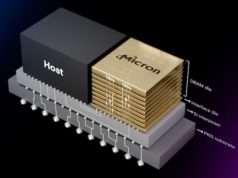
- Register
- Login
26°C
- Article
- . (0)
- Related content
- Company info
The catchup being played by China-based Semiconductor Manufacturing International (SMIC) to the rank of Taiwan Semiconductor Manufacturing Company (TSMC) has moved one step further with former TSMC co-chief operating officer Shang-yi Chiang accepting an offer to serve as an independent, non-executive director at SMIC.
TSMC has said that Chiang served many years before his retirement from the foundry house and is deeply respected by TSMC executives and employees, and it believes Chiang will not harm the interests of TSMC.
But what are the implications for a TSMC veteran, who is currently 70 years old and presumably financially OK, accepting an offer which will earn US$40,000 plus 375,000 SMIC shares a year? Particularly as Chiang says he received consent from TSMC chairman Morris Chang prior to accepting the offer.
Although TSMC currently holds over 210 million shares, or roughly a 1% stake, in SMIC, Chiang’s joining the China-based foundry house cannot be interpreted as a deepening of cooperation between TSMC and SMIC.
However, the appointment could be deemed as a move by TSMC to deepen its deployment in China, which is building up its semiconductor industry and has fostered a proliferation of local IC design houses, a sector which TSMC cannot overlook.
HiSilicon Technologies, a subsidiary of Huawei Technology, is currently one of the major clients of TSMC’s 16nm and 10nm manufacturing processes. Spreadtrum Communications and RDA Microelectronics of the Tsinghua Unigroup have also placed wafer orders with TSMC.
Viewing the vast market potential in China, TSMC is also building a 12-inch fab in Nanjing, and has an existing 8-inch fab in Shanghai.
So it makes sense to speculate that TSMC and SMIC are likely to corporate in some way to maintain their leading market positions in China, using SMIC’s geographical advantage.
With Chiang’s assistance, SMIC will be more confident about achieving its goal of reaching a CAGR of 20% during the period from 2016-2019. SMIC saw its revenues grow 36% on year to a record high of US$775 million in the third quarter of 2016.
Samsung Electronics is also likely to begin to worry that TSMC and SMIC may tie up together someday to fend off its expansion in the China market.



- Wireless broadband developments in Southeast Asia markets
As of 2013, the 10 ASEAN nations had a total of over 700 million mobile subscriptions, with the CAGR from 2003-2013 reaching 24%. This Digitimes Research Special Report analyzes the various mobile broadband markets in ASEAN and looks at the respective trends in 4G LTE development for those markets.
- 2015 global tablet demand forecast
This Digitimes Research Special Report provides a 2015 forecast for the global tablet market and analyzes the strategies of key market players such as Google, Apple, Intel, and Microsoft.
- 2015 China smartphone panel trend forecast
This Digitimes Research Special Report analyzes the strategies of key China-based major panel makers BOE, Tianma and IVO for attacking the different market segments through technology and pricing, and their relationship to local vendors Huawei, Lenovo, ZTE, Xiaomi and Coolpad.

…






![[Infographic] Why Samsung’s AI TV Is Fit To Upscale Everyday](https://loginby.com/itnews/wp-content/uploads/2024/05/1716008233_Infographic-Why-Samsung’s-AI-TV-Is-Fit-To-Upscale-Everyday-100x75.jpg)

